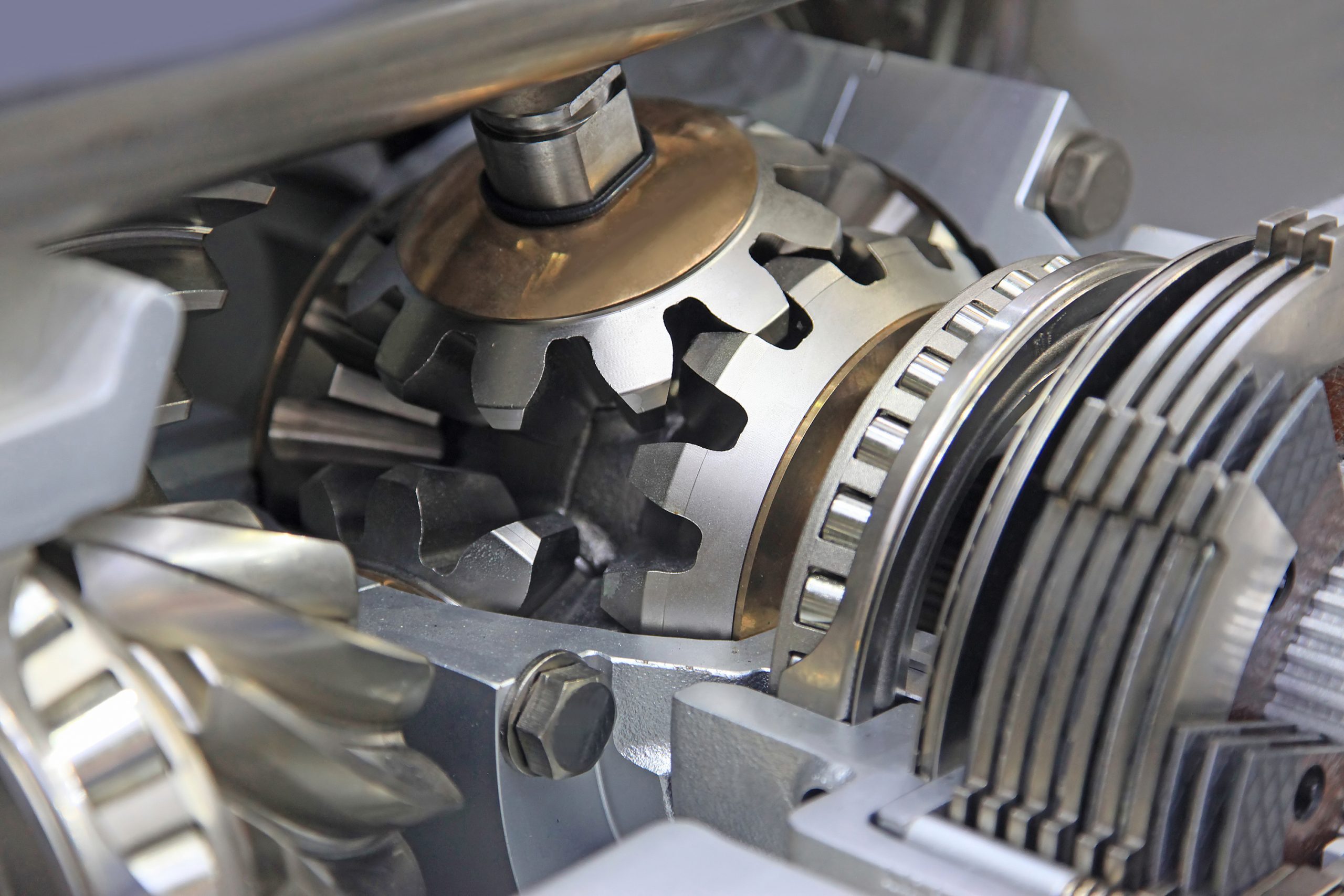

If you have ever driven on a curvy road that required cornering while driving, you probably were not thinking about what made it easy for your vehicle to perform that basic function. One very important component, the vehicle differential, is an essential part of your axle assembly that plays a role in powering your wheels and their speed of rotation when rounding a curve or making a turn. In this month’s blog, we examine the differential, its purpose, and what to look for when a problem develops.
The purpose of the differential
If you are driving straight down a long highway, your wheels are going to be spinning at the same speed. When you reach a curve or turn, your wheels will spin at different speeds. This is due to the laws of physics and the fact that the inside and outside wheels travel either shorter or longer distances to accomplish the vehicle turn. As the vehicle turns, the inside wheel rotates slower than the outside wheel because it is traveling a shorter distance than the outside wheel.
The differential is what controls those different speeds by the torque power it provides to each wheel so that they can spin at different speeds simultaneously and compensate for the difference in speed.
The location of the differential in your vehicle depends on the drive system of your vehicle. For example, if you drive a front-wheel drive vehicle, your vehicle’s differential is located next to the transmission on the transaxle. The rear-wheel drive differential connects to the transmission through a driveshaft centrally positioned in the rear part of the vehicle.
Type of Differentials
The most common differential found in vehicles is an open differential. This differential has pinion gear that is located on the driveshaft which engage with other gears to transfer power to both axles. If you drive a higher performance vehicle, or one with towing capabilities, your vehicle may be equipped with a limited slip differential. This type of differential uses a clutch system to lock the wheels together if one happens to lose traction on the road, thus keeping them spinning at the same speed.
Problems with Differentials
Because of its function, the differential is designed to be tough and withstand a lot of wear and tear. However, problems can surface that can impact the differential functioning through faulty gears or bearings, or lack of maintenance.
Common problems of differentials are manifested in various ways to alert you that something is wrong, including:
- Whining noises during operation, specifically while decelerating. This is usually the result of a leak or inadequate lubrication of the differential.
- Heavy Vibrations during operation, specifically when gaining speed. The vibrations may be caused by faulty or damaged universal joints.
- Grinding or humming during operation. This is the result of damaged or worn gears and low differential fluid. The gears may also become misaligned.
Keep in mind that when your differential is damaged, it presents a safety issue. A failed differential may cause an accident because of poor road handling, especially during turns. If you suspect that your differential is damaged, you should not drive the vehicle.
Maintenance for the Differential
One important maintenance task to keep your differential working properly is to ensure that your differential has adequate differential oil. Many problems arise when there is a leak or low differential oil to keep parts lubricated and protected.
Another helpful task is to ensure that the parts are periodically lubricated by a service professional. It’s also a good idea to have the differential on the 30–50-thousand-mile maintenance check-up and have it inspected, and any oil replacement done at that interval.
The next time you are driving on a curvy road and make a flawless turn, remember the differential is a crucial component that assists with this process. If you would like to have your vehicle’s differential inspected, contact the service professionals at Car Kings to schedule an appointment.
